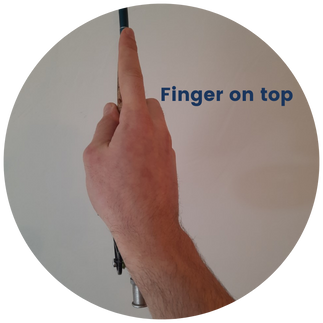"We lived... in western Montana, and our father was a Presbyterian minister... He told us about Christ's disciples being fishermen, and we were left to assume... that all first-class fishermen on the Sea of Galilee were fly fishermen and that John, the favorite, was a dry-fly fisherman" (A River Runs Through It – Norman Maclean)
The calm rushing of water, rhythmic motion of the rod, and personal connection with nature's beauty draws anglers to Montana rivers from all over the world. Fly fishing (along with all other types of fishing) can be mentally therapeutic - in fact, simply being in nature can decrease anxiety/stress, and even boost your immune system.
Fly fishing is unique due to its repetitive and rhythmic overhead motions with a rod to “throw” a fly fishing line backwards and forward. Unfortunately, these motions sometimes come with consequences. Shoulder, elbow, and wrist/hand injuries are common in professional and recreational anglers. Specifically, one of the most common issues from fly fishing is pain on the outside of the elbow (see photo below). Interestingly, elbow pain effects 16-39% of fly fishing anglers.[1, 2] This pain often occurs due to irritation in the forearm muscles/tendons that control “cocking” the wrist backwards (i.e., wrist extensors). This issue is often called “Tennis elbow” (see the Deep Dive for more details), but for the purpose of this blog, we might as well call it “Casters elbow”. See below for strategies on how to keep your elbows healthy while fishing.

How to treat and prevent “Casters elbow”?
Casting Style
Overhead, sidearm, and elliptical (sidearm back cast combined with an overhead forward cast) are 3 standard casting styles. To reduce elbow strain, the overhead cast is considered the safest. An alternative "safer" casting style is to frequently shift between casting styles. Sidearm and elliptical are strategic for certain fishing scenarios, but whenever possible try to cast with the overhead style considering it results in less stress on the arm.
Grip Style
There are 3 types of standard rod grips (see photos below). Thumb on top is the most common technique. Research suggests that the "finger on top" grip may predispose the wrist and other upper extremity joints (e.g., shoulder) to injuries. More research is needed to be conclusive about which grip is “best”, but a thumb on top or v-style are recommended considering they may reduce tension along the outside of the elbow.[1, 2]
Line Weight
Adding weight to your line is sometimes necessary depending on water being fished, however, it may add extra stress to the elbow. This lines up well with logic - the heavier the line, the harder your muscles and joints will be worked. Research shows that use of added weight (e.g., split-shot) for sinking flies (e.g., nymphs) increases the likelihood of arm injuries. Like we previously mentioned, adding weight is often necessary, but it can be helpful to avoid use of unnecessary and excessive weight especially if you are currently experiencing elbow pain.[1, 2]
Strengthen and Mobilize
Fly fishing is a nuanced sport, and if you are newer with casting a rod, you may experience discomfort in your elbow initially. If your arm is not accustomed to the repetitive motion of fishing, your injury risk goes up. Strengthening and stretching your muscles helps prepare your arm for fishing. Prepare your muscles for fishing by incorporating this month’s Trifecta exercises that can improve the arm's ability to withstand the repetitious forces created from those long fly fishing days.
References
Kuhn AW, Kuhn JE. Upper Extremity Pain and Overuse Injuries in Fly-Fishing: A North American Cross-Sectional Survey and Implications for Injury Prevention. Orthop J Sports Med. 2020;8(10):2325967120959303. doi:10.1177/2325967120959303
McCue TJ, Guse CE, Dempsey RL. Upper extremity pain seen with fly-casting technique: a survey of fly-casting instructors. Wilderness Environ Med. 2004;15(4):267-273. doi:10.1580/1080-6032(2004)015[0267:uepswf]2.0.co;2

Healthy Is Wellness, LLC (“Healthy Is Wellness”) is not a health care provider, and does not provide professional medical advice, diagnosis, and/or treatment. THE INFORMATION PROVIDED BY HEALTHY IS WELLNESS IS FOR INFORMATIONAL PURPOSES ONLY.







Comments